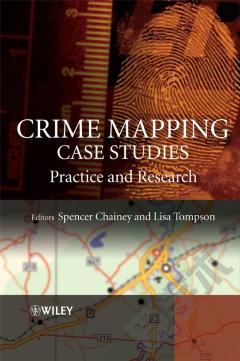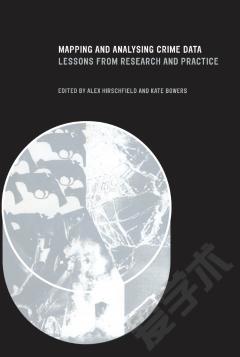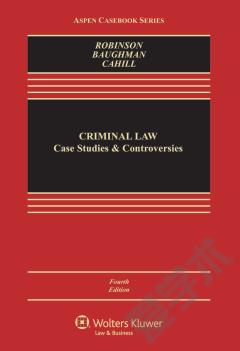Crime Mapping Case Studies —— Practice and Research
----- 犯罪映像案例研究:从研究到实践
List of contributors. Preface. Part I Developing crime mapping. 1 Developing geographical information systems and crime mapping tools in New Zealand (Andy Gilmour and Jill Barclay). 1.1 The starting point. 1.2 Developing a web-based GIS solution for New Zealand Police. 1.3 Building on the map-based analytical policing system (MAPS). 2 An analytical technique for addressing geographical referencing difficulties and monitoring crimes in Rio de Janeiro, Brazil (Ana Paula Mendes de Miranda and Marcus Ferreira). 2.1 Introduction - developments in crime analysis in Rio de Janeiro. 2.2 Analysis by space-time monitoring cells. 2.3 Identifying crime patterns using paper maps. 2.4 Identifying crime patterns in Rio de Janeiro using GIS and digital cartographic base maps. 2.5 Crime analyses on bus routes in Rio de Janeiro. 2.6 Conclusions. 2.7 References. 3 Methods for implementing crime mapping within a large law enforcement agency: experiences from Victoria, Australia (Timothy Mashford). 3.1 Introduction. 3.2 A phased plan for development and delivery. 3.3 Progress to date. 3.4 Crime mapping projects - some examples. 3.5 Conclusions. 3.6 Reference. 4 Automating briefings for police officers (Tom Casady). 4.1 Introduction. 4.2 Automating crime mapping outputs in Lincoln Police Department. 4.3 Developing the automation of tasks in Lincoln. 4.4 Automating crime mapping in your agency. Part II Geographical investigative analysis. 5 Geographic profiling analysis: principles, methods and applications (D. Kim Rossmo and Lorie Velarde). 5.1 Introduction. 5.2 The theoretical principles behind geographic profiling. 5.3 Geographic profiling methodology. 5.4 Applying geographic profiling to 'volume' crime: the Irvine Chair burglaries. 5.5 Measuring the effects of geographic profiling in Irvine. 5.6 References. 6 Geographic profiling in an operational setting: the challenges and practical considerations, with reference to a series of sexual assaults in Bath, England (Clare Daniell). 6.1 Introduction. 6.2 Applying geographic profiling to a series of indecent assaults in Bath, England. 6.3 Offender geography. 6.4 Operational versus academic geographic profiling. 6.5 Conclusions. 6.6 References. 7 The Hammer Gang: an exercise in the spatial analysis of an armed robbery series using the probability grid method (Chris Overall and Gregory Day). 7.1 Introduction. 7.2 Background. 7.3 Mapping the data and getting the picture. 7.4 Predicting the next offence location. 7.5 Results. 7.6 Issues in application of the probability grid method. 7.7 Conclusions. 7.8 Acknowledgements. 7.9 References. 8 'Rolling the Dice': the arrest of Roosevelt Erving in Lincoln, Nebraska (Tom Casady). 8.1 Introduction. 8.2 Erving's series of bank robberies. 8.3 Analysing Erving's series. 8.4 Project 'Rolling the Dice'. 8.5 The crucial role of geographical analysis. Part III Neighbourhood analysis. 9 The strategic allocation of resources to effectively implement Neighbourhood Policing and the Community Safety Plan (Alice O'Neill). 9.1 Introduction. 9.2 Alternative resource allocation model. 9.3 What were the results, outcome and issues? 9.4 The future. 9.5 Reference. 10 Priority neighbourhoods and the Vulnerable Localities Index in Wigan - a strategic partnership approach to crime reduction (Ian Bullen). 10.1 Introduction. 10.2 An alternative Vulnerable Localities Index. 10.3 Vulnerable localities in Wigan. 10.4 Using the Vulnerable Localities Index to help understand offending patterns. 10.5 Developing the Vulnerable Localities Index to support urban regeneration and Neighbourhood Policing. 10.6 Acknowledgement. 10.7 References. 11 Reducing re-offending in local communities: geographical information system based strategic analysis of Greater Manchester's offenders (David Ottiwell). 11.1 Context and introduction. 11.2 Implementation, testing and analysis. 11.3 Results, outcomes and issues. 11.4 References. Part IV Integrating visual audits and survey data into crime mapping. 12 Community Safety Mapping Online System: mapping reassurance using survey data (Steven Rose). 12.1 Introduction. 12.2 Community Safety Mapping Online System (COSMOS). 12.3 Measuring reassurance. 12.4 Environmental visual audit (EVA). 12.5 Practical use of results. 12.6 Evaluation and next steps. 12.7 References. 13 Mapping the fear of crime - a micro-approach in Merton, London (Chris Williams). 13.1 Introduction. 13.2 Process. 13.3 Methodology. 13.4 Results. 13.5 Methodological applications and considerations. 13.6 References. 14 NightVision - visual auditing of night-time economy related incidents in Bath and North-East Somerset (Jon Poole). 14.1 Introduction. 14.2 Project design and implementation. 14.3 Methodological considerations. 14.4 Findings from the NightVision surveys. 14.5 Generating action. 14.6 Conclusions. 14.7 Reference. Part V New techniques. 15 The near-repeat burglary phenomenon (Derek Johnson). 15.1 Introduction. 15.2 Near repeats in Bournemouth. 15.3 A methodology for analysis and action. 15.4 Delivering a near-repeat intervention. 15.5 The impact. 15.6 Conclusions. 15.7 References. 16 Simulating crime to inform theory and practice (Elizabeth Groff). 16.1 Introduction. 16.2 Agent-based modelling. 16.3 Creating a theoretically based simulation model to test routine activity theory. 16.4 Findings and significance of the research - comparing a simulated environment to the principles of routine activity theory. 16.5 Comparing a simulated crime environment to reality. 16.6 Implications for practice. 16.7 References. 17 A crime mapping technique for assessing vulnerable targets for terrorism in local communities (Rachel Boba). 17.1 Introduction. 17.2 Assessing target vulnerabilities: two components. 17.3 Assessing target vulnerabilities: a hypothetical case study. 17.4 Considerations. 17.5 References. 18 Interactive Offender Profiling System (IOPS) (David Canter and Donna Youngs). 18.1 Introduction. 18.2 An integrated operational system. 18.3 The potential of the interactive offender profiling system. 18.4 Acknowledgement. 18.5 References. Index.
{{comment.content}}








 京公网安备 11010802027623号
京公网安备 11010802027623号